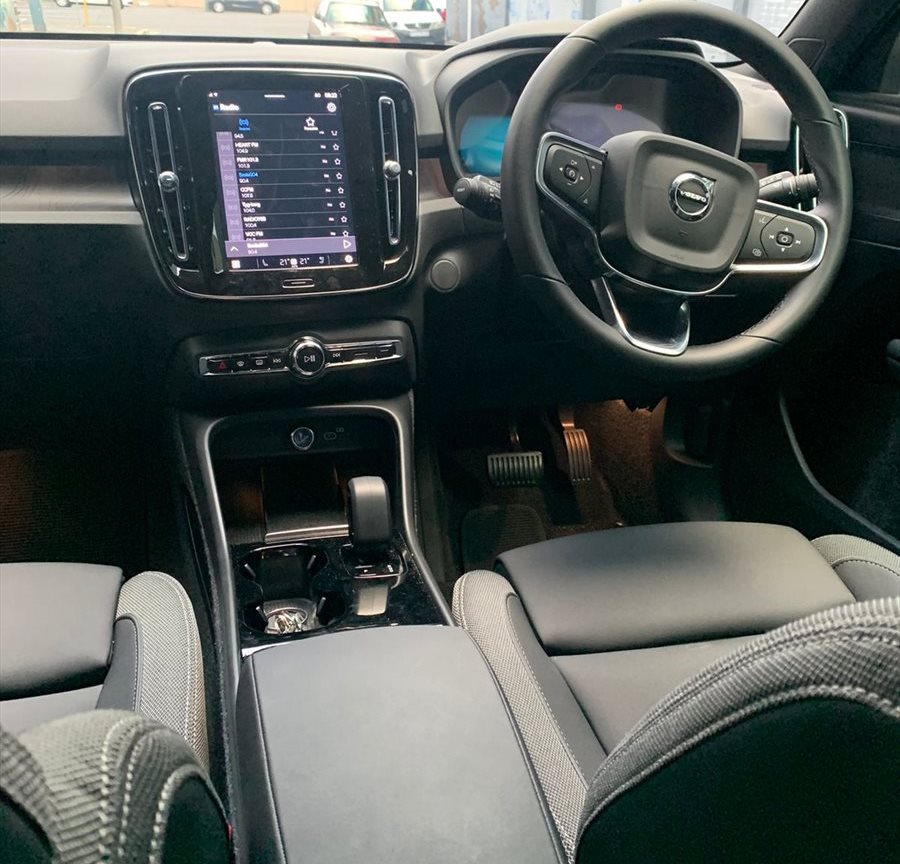
Related
Top stories


Logistics & TransportIata urges global safeguards for aircraft systems as 5G/6G rollout continues
13 hours

AgricultureAgricultural exports from Africa are not doing well. Four ways to change that
Lilac Nachum 14 hours





Firstly, as a brand, Volvo just knows how to do things right. Their vehicles are premium, are arguably the safest, and competitively priced. So it's no surprise that my time with the XC40 P6 was a positive one.
But what was it like to drive though? The XC40 P6 has a single motor on its front axle, which sends power directly to the front wheels. I tested the responsiveness of the pedal and it was lightning quick, and keep in mind that there's a XC40 P8 with two motors, with one each sitting on the front and back axle. I imagine this model being much quicker off the line.
The P6 pushes out 170kW and 330Nm and does the obligatory 0-100 km/h sprint in 7.4 seconds. It has a shift-by-wire, single-speed transmission that features a short gear ratio.
Matching the torque in performance is the suspension. It's cushiony and passengers that sat with me on some drives said that it felt like the car was floating. This can seem like an exaggeration to car aficionados, but I can vouch by reiterating that the C40 did a great job handling the torn and worn-out roads in some of Cape Town's suburbs.
Now when it comes to the question of recharging, many can be deterred to not opt for an EV just yet, and understandably so. I got the C40 with about a 350km+ range and after about four days of doing my daily driving, I had 40% battery left.
I drove hard but within speed limits and I couldn't quite resist the urge to feel the immediate thrust from the pedal, hence the 40% figure. I realised I needed a charge to get through the rest of my testing period, which prompted me to do research to find the closest fast charging station.
A DC charging station was found in a location 15 minutes away from home. To make this experience more challenging, I took my kids with me to see what it's like to wait in a realistic setting while a car charges.
The DC charger took approximately an hour and a half to a full 100% at the Garden's Shopping Centre. During this time I shopped, which made the time go by a lot faster.
The experience was not terrible, but without having a charger at home (thankfully a wall charger comes with the purchase) having to drive out and wait can become tiresome over time.
The 69kWh battery pack has a longer single charge range (423km on the WLTP cycle) than the Twin Motor Ultimate, Volvo claims. The P6 can travel up to 423km on a single and is fitted with a 11kW onboard charger
The inside of the P6 is something I miss. There's a uniqueness about it. It's simple and uncluttered. The materials are quality and they feel solid and rigidly placed. The leather seats are flanked by grey cloth material and stitching. The air vents are horizontal and there's a panel that extends around the dashboard. This dashboard lights up when the car senses it's dark outside, and it looks amazing. I touched on this in my launch review of the Volvo C40 Recharge.
I must admit that I found the inside a tad cramped for leg-room and head-room for the driver. My left leg also didn't feel comfortable, there's minor room for improvement here.
On outside the P6 is a head-turner. Most people can instantly identify that it’s an EV, which is cool. Our test model in Fjord Blue was particularly striking, especially in cloudy weather, which perfectly suits the brand.
Standard features include 20-inch alloy wheels, a panoramic sunroof, wireless smartphone charging, front/rear parking sensors, and a reverse camera.
The Volvo XC40 P6 Recharge Single Motor Plus is priced at R1,075,000 and includes a five-year maintenance plan and warranty, three years of comprehensive insurance, use of a petrol car for two weeks per year for three years, a public charge cable and a wall box home charger.